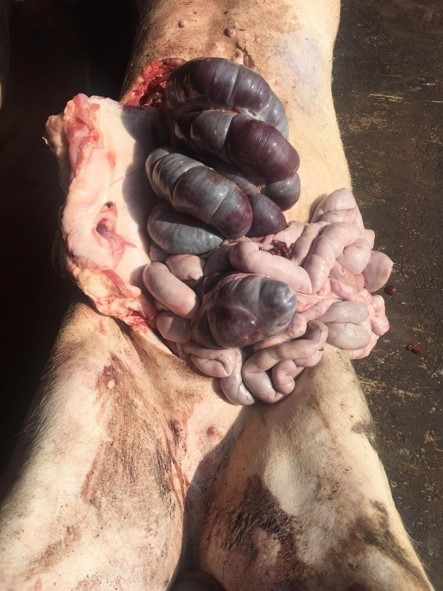Haemorrhagic Bowel Syndrome in fattening pigs - A case study
You are here

Haemorrhagic bowel syndrome (HBS) has been described since 1959. The term is applied for a sporadically occurring disorder in fattening pigs, characterized by sudden death together with a pale carcass, severe abdominal distension and intense red coloration of the intestine. Generally, the affected animals show no evidence of diarrhoea or other clinical signs prior to death . HBS is primarily seen in rapidly growing pigs between 4 and 6 months of age with otherwise excellent health.
Dissection of affected pigs shows the small intestine is in general thin-walled, dilated with gas and filled with watery contents and unclotted blood. The large intestine can contain tarry faecal material, i.e. faecal material having the colour of tar caused by haemorrhage, but shows no further pathological findings. Lesions suggestive of gastric ulceration, haemorrhagic proliferative enteritis, salmonellosis, swine dysentery, or other identifiable disease processes are absent.
|
|
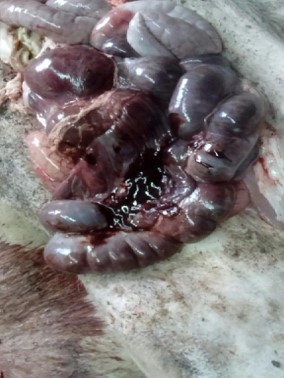 |
Figure 1 Dissection of a pig affected by HBS: haemorraghic, dilated small intestine (left) and detail of the bloody small intestinal contents (right)
Although the precise aetiology and pathogenesis of HBS are still unclear, several risk factors have been described:
- An infectious set of causes (aetiology)
- The result of a loop of intestine twisting around itself and the mesentery that supports it (intestinal volvulus) resulting in a bowel obstruction.
- Hypovolemic shock due to excessively high intra-abdominal pressure in the absence of intestinal torsion
Furthermore, overgrowth and alterations of certain bacteria, such as Clostridium perfringens or Escherichia coli, and yeasts in the intestinal tract, may also give rise to HBS, as these micro-organisms produce toxins and damaging compounds.
Although the condition was initially primarily seen in Europe with only occasional reports in the United States, it has become more prominent since the ’90.
Case presentation
The purpose of this report is to describe the occurrence of HBS in the farms of a large Slovenian pig producer. The total number of pigs fattened within the group in 2019 was 33 910 animals. The piglets are bought from abroad and arrive at the farm when they weigh between 25 and 30kg. The first week, they receive a kind of welcome feed, rich in vitamins and supplements to boost and support immunity, health and reduced stress. Thereafter, they are fed according to the following feeding scheme:
- Grower feed: 25 – 60kg
- Finisher 1: 60 – 100kg
- Finisher 2: 100 – 130kg
Shown in below graphs, the technical results for the period January 2018 –July 2020.
Mortality caused by HBS (%)
With respect to mortality, the threshold for the group is 3%. An increased incidence of HBS was noticed starting June 2018 until January/February 2019. Problems were most pronounced in animals with Danish genetics. At the peak HBS made about 20 casualties per week and especially heavy pigs (>100kg). Beginning of February, the group decided to incorporate coated Ca-butyrate (GBM Performant) in the diet resulting in a reduction of the mortality rate below the 3%-threshold. Exception is September 2019, where the increased mortality was caused by a mistake in the factory whereby no Ca-butyrate was included in the diet for two weeks. The high mortality observed in the period February – April 2020 was due to an episode of pneumonia in the herd.
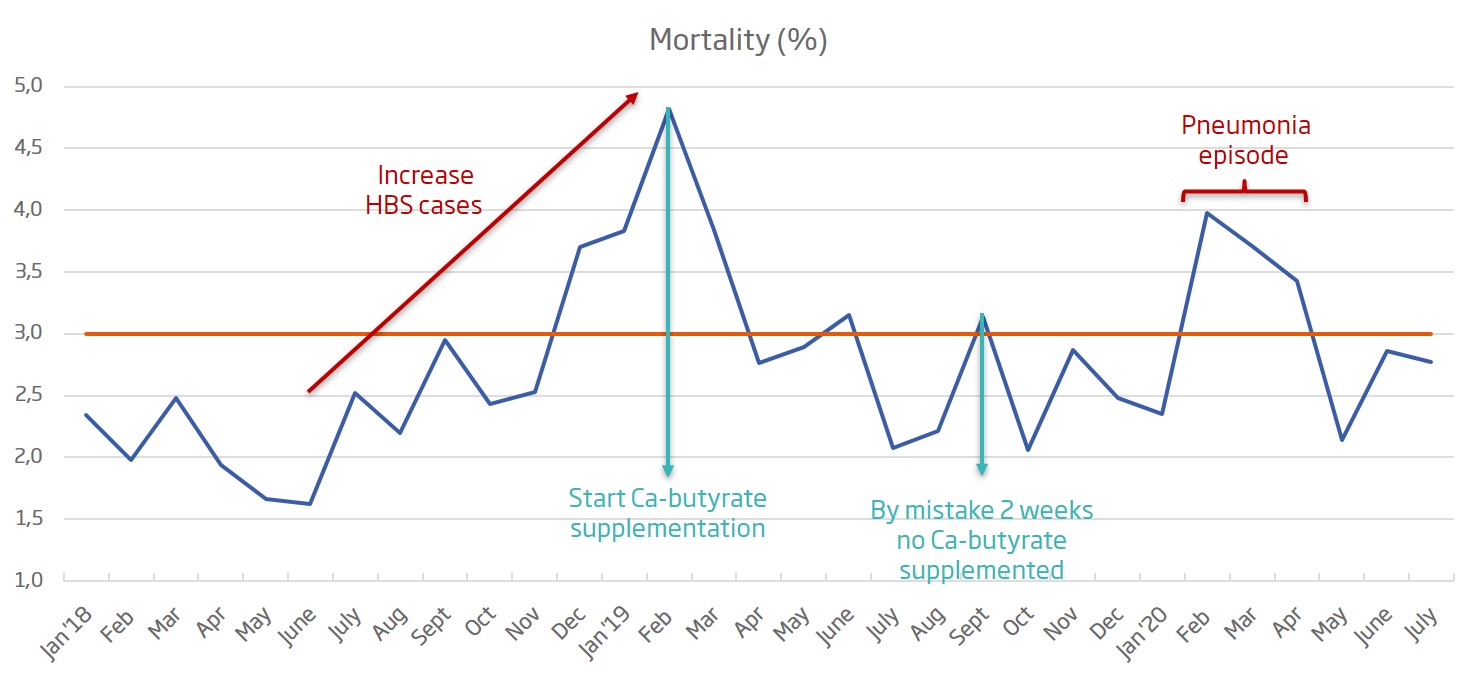
Feed Conversion Ratio and Average Daily Gain
Apart from a lowered incidence of HBS, the inclusion of Ca-butyrate also resulted in an improvement of both the feed conversion ratio (FCR) and the average daily gain (ADG) as shown in graph below. As for the mortality, an increase in FCR and decreased ADG is noticed for the months February – April 2020 as a result of pneumonia.
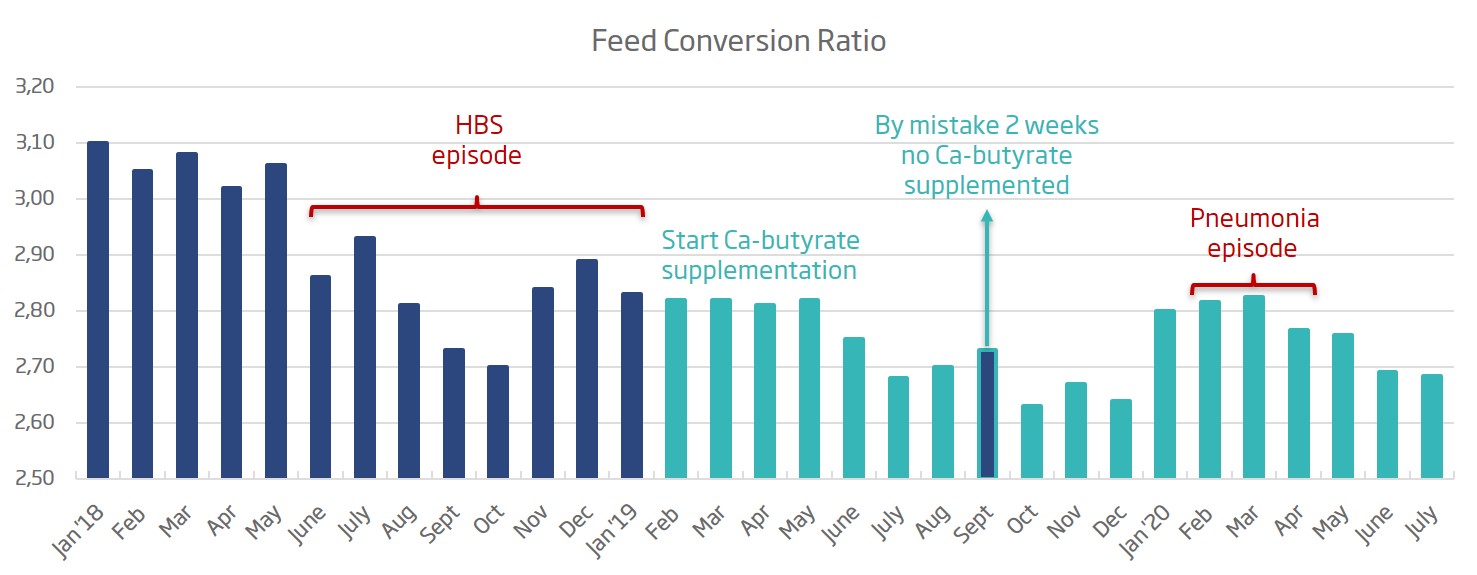
Conclusion
It is seen that butyrate and its derivatives generally demonstrate positive effects on animal production, including enhanced gut development, reduced inflammation, improved growth performance (including carcass composition), modulation of gut microbiota and control of enteric pathogens like Clostridium perfringens and E. coli. These latter two bacteria are assumed to be one of the causes of HBS, when able to overgrow and produce toxins.
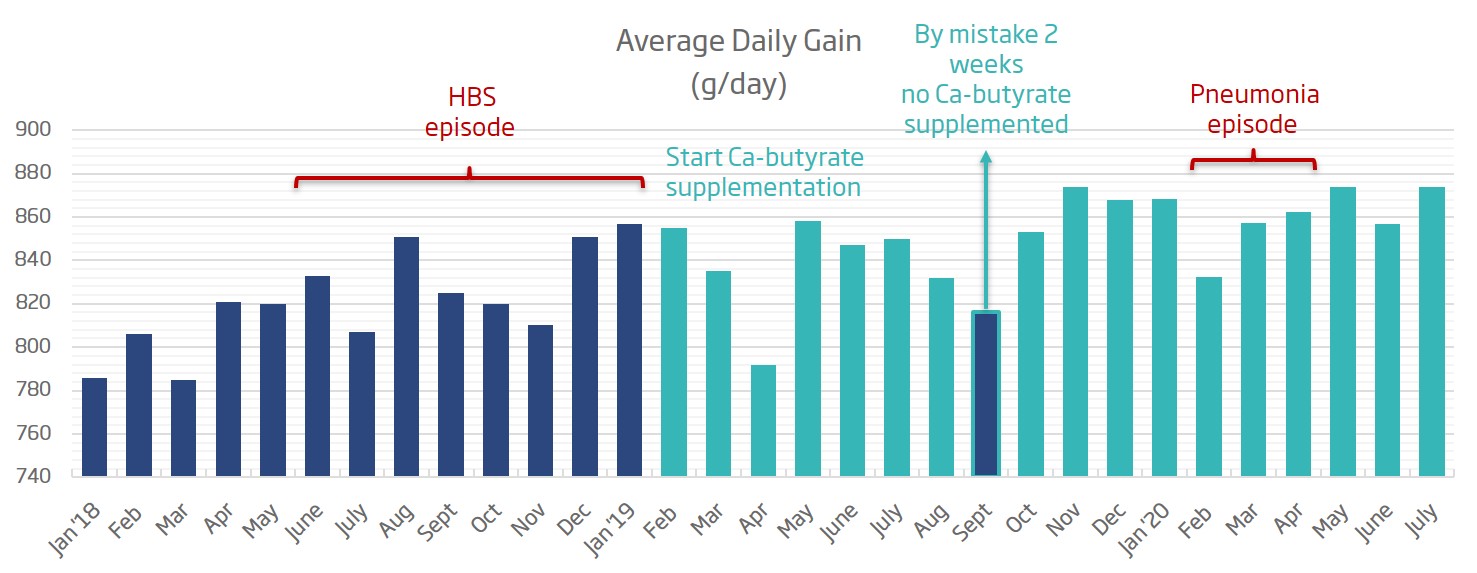
This effect of reduced mortality, improved feed conversion and weight gain is beneficially affecting the economics of this farm.
References
Grahofer, A., Gurtner, C., & Nathues, H. (2017). Haemorrhagic bowel syndrome in fattening pigs. Porcine health management, 3, 27. https://doi.org/10.1186/s40813-017-0074-1
Straw, B., Dewey, C., Kober, J., & Henry, S. C. (2002). Factors associated with death due to hemorrhagic bowel syndrome in two large commercial swine farms. Journal of Swine Health and Production, 10(2), 75-79.
